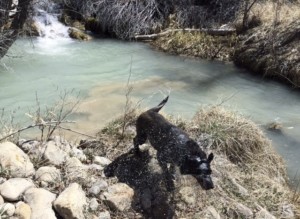
Mavis from Rocky River Retrievers
Teaching a puppy to swim can be a challenge. When you start, your puppy may be nervous, this is perfectly natural. However, swimming is a skill that can keep your puppy safe and if taught well, can benefit them in the long run.
Easing Them In
Ease the puppy into shallow, warm water. You may begin teaching your dog to swim when they’re two to five months old, by then your dog will have the muscle strength and endurance required for its first swimming lessons. Do not put a dog who is unfamiliar with swimming in deep, cold water and expect it to swim naturally. Instead, the dog should go through a progressive learning process, similar to how children must gradually learn to swim.
Let Them Play in Water
Allow your dog to spend a significant amount of time playing and having fun in shallow water before introducing them to deeper water. This will provide your pup with positive connections with water. Some breeds are more inclined to swim than others. For example, labs are bred to retrieve in the water. But your dog’s interest in swimming is individual. But, by playing games and spending time in shallow water, your pup will gain more confidence in the water.
Use a Floatation Device
If you are concerned about your dog’s safety, you can put a life jacket on it. There are several canine flotation devices on the market. These are often vest-style coats with hooks that go around the dog’s chest and under its belly. Like flotation devices for humans, you must have one that fits your dog correctly. When it comes to keeping your dog afloat, a good fit is essential. Dog flotation devices usually feature a handle on the back, so you can quickly pull your dog out of the water if it is struggling.
Check out some life jackets for your pup here.
Swim With Your Dog
Enter the water with your puppy. Seeing you in the water will signal to your puppy that the water is safe. Don’t assume that if you instruct your dog to go into the water by itself, it will. Instead, it may require some encouragement and support with your participation. Carry a fearful dog into the water and demonstrate that you are there to assist it. Hold on to the dog and allow it to paddle with its paws as you hold on to it.
Train In Short Intervals
Swimming may be quite taxing at first. Take a break or call it a day if your dog appears tired or is panting excessively. If you overwork your dog, they may get put off from the water altogether.
In Conclusion
Before you try to teach your puppy to swim, do ample research, and talk to canine experts and other dog owners. Swimming is a skill that can keep your puppy safe and if taught well, can benefit them in the long run. Good luck!
Check out some of our pups!
Here’s a video that can help you get started:

